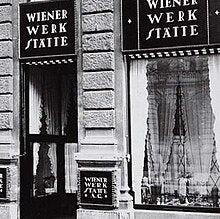If you're a dog lover and art enthusiast, you're in for a treat!
The world of art has witnessed many talents that transcend time, and one such luminary is Moriz Jung (1885-1915), whose legacy lives on through his remarkable Dog art.

The Life and Legacy of Moriz Jung
Moritz Jung, later known as Moriz, was a graphic artist of remarkable skill and social awareness. Born on October 22, 1885, in Nikolsburg/Mikulov, Moriz hailed from the traditional Jewish community of South Moravia. He moved to Vienna as a teenager and studied at the Kunstgewerbeschule (School of Applied Arts) between 1901 and 1908, where he was tutored by Alfred Roller, Carl Otto Czeschka, and Bertold Löffler.
While still a student, Jung already showed incredible promise. As an 18-year-old, he had ten of his works published in the influential publication “The surface” The publication was edited by Felician Myrbach, the director of the School of Applied Arts, and professors Josef Hoffmann, Koloman Moser, and Alfred Roller and, underlining the esteem in which he was held.
A Prolific Student and Professional Career
Jung's journey into the world of art was marked by an exceptional talent for illustration, evident in his proficiency with woodcuts, linocuts, lithographs, and book illustrations. During his formative years as a student, his prowess in these artistic techniques alongside his sense of humour and the bizarre caught the eye of his mentors and peers alike. Notably, he demonstrated a unique ability to breathe life into his subjects, capturing their essence with remarkable precision and simplicity in strikingly modern feeling designs.
During his student years, Jung also designed the second program for the Cabaret Fledermaus, a new venue in Vienna at the time. He published his illustrations and caricatures in various periodicals, such as “Ver Sacrum,” “Erdgeist,” “Der Ruf,” and the satirical magazine “Die Glühlichter,” often using a variety of aliases like Simon Mölzlagl and Nikolaus Burger (in reference to his birthplace).
In 1907, while still a student at the Kunstgewerbeschule, Jung began contributing designs for the Wiener Werkstätte producing 63 postcards, an avenue through which he could showcase his artistic vision, these now form the bulk of his surviving works.
His unique style, characterized by thick-lined graphics, set him apart, and he embarked on a journey of creating captivating series on various subjects.. From dogs to café interiors, caricatures of smokers to satires of early airplanes, Jung's diverse portfolio reflected his versatility and creative depth despite his short life. His humour could be peculiar, inviting the viewer into a strange, almost bizarre world.
Jung's Association with the Wiener Werkstätte
Moriz Jung's creative spirit found a home within the Wiener Werkstätte (Vienna Workshop), a cooperative founded by architect Josef Hoffman, painter Koloman Moser, and textile industrialist Fritz Waerndorfer in 1903. This collaborative space provided a platform for artists and artisans to come together and showcase their talents. Jung's involvement with the Wiener Werkstätte proved instrumental in shaping his artistic trajectory.
A Short-Lived Yet Impactful Legacy
Jung's life and career were abruptly halted when he was called up for military service in World War I. Despite being honoured for a portrait of Emperor Franz Joseph, he was seriously injured in September 1914 and later fell in battle in March 1915. Art critic Arthur Roessler penned an obituary in the “Arbeiter-Zeitung,” stating that Jung had delighted many with his unique artistry. Numerous other obituaries confirmed that Jung, who was just 29, had already achieved wide recognition. Despite the brevity of his life, Jung's impact on the art world remains indelible.
Exploring Jung's Captivating Dog Art
 Moriz Jung's enduring legacy is beautifully encapsulated in his representation of various dog breeds as Chromolithograph. His dog print collection, including Greyhounds, Pitbulls, Frenchies, Bulldogs, and Borzois, showcase his remarkable skill in capturing not just the physical attributes, but also the distinct personalities and characteristics of each breed. Jung's Greyhound piece, for instance, captures the breed's elegance and agility, while his depiction of the Bulldog emphasizes its strength and loyalty.
Moriz Jung's enduring legacy is beautifully encapsulated in his representation of various dog breeds as Chromolithograph. His dog print collection, including Greyhounds, Pitbulls, Frenchies, Bulldogs, and Borzois, showcase his remarkable skill in capturing not just the physical attributes, but also the distinct personalities and characteristics of each breed. Jung's Greyhound piece, for instance, captures the breed's elegance and agility, while his depiction of the Bulldog emphasizes its strength and loyalty.
Honoring Jung's Legacy with Framed Prints
At Lelloliving, we're delighted to offer you the opportunity to own a piece of Moriz Jung's legacy through our framed prints of his iconic dog artworks. Our curated vintage pictures collection celebrates Jung's ability to infuse life and character into his subjects, allowing you to adorn your living spaces with timeless charm. Whether you're captivated by the grace of the Greyhound, the playful frenchie, the charm of the Bulldog, or the regal aura of the Borzoi, our framed vintage prints encapsulate the essence of each breed.

